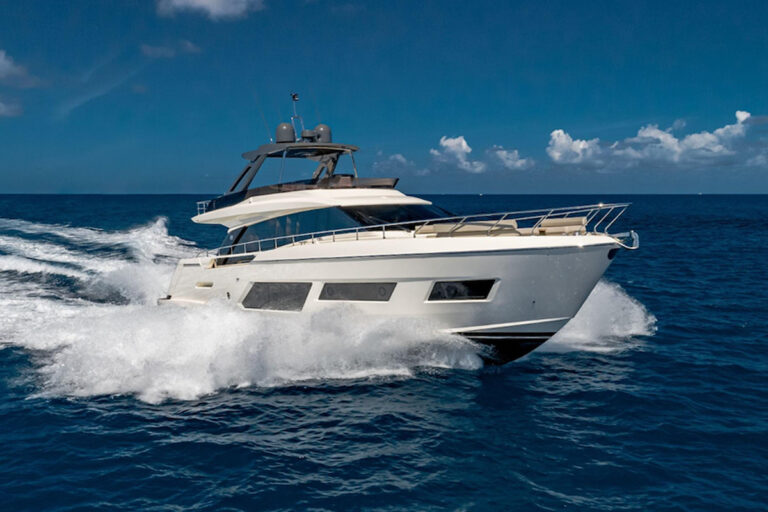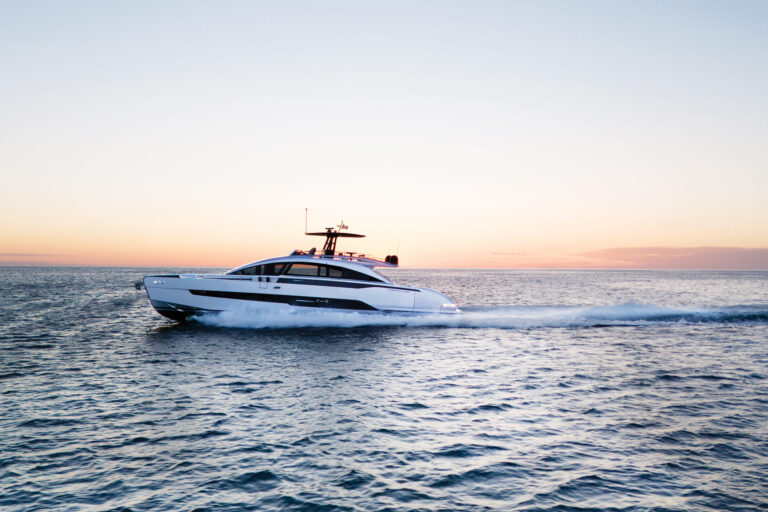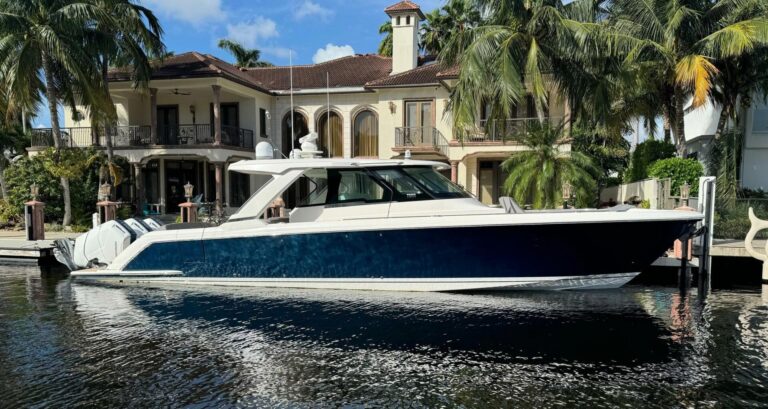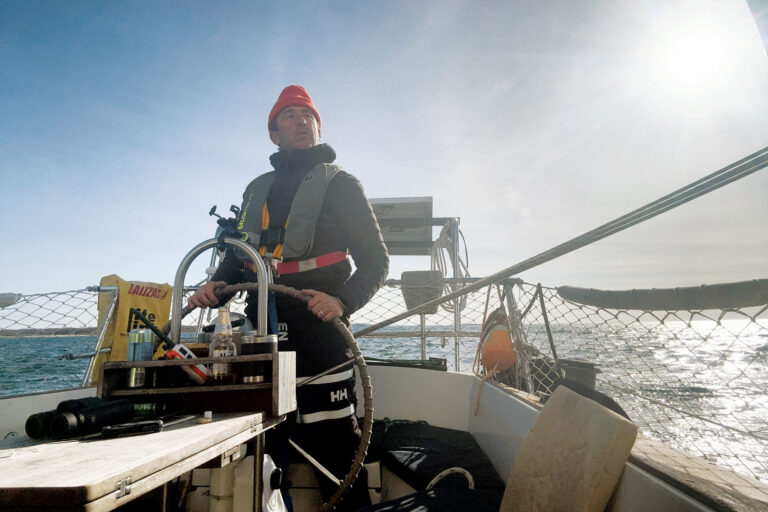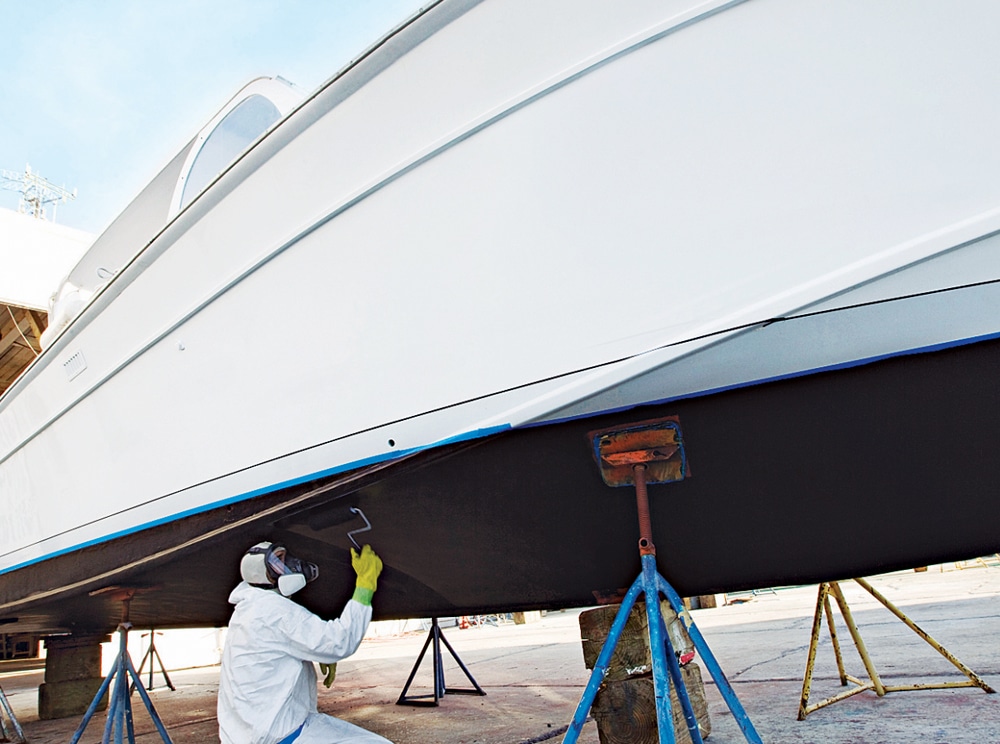
Choosing a Bottom Paint
Brimstone (sulfur) was an early antifoulant. Copper came into vogue about 250 years ago, nailed to boat bottoms in sheets. Today, cuprous oxide or copper thiocyanate are blended into paint to protect boats against barnacles, tube worms, mussels and other invertebrates that can’t tolerate the copper. Herbicides like Irgarol are often added to combat algae and slime in growth-prone harbors. Econea, originally used to protect wood from insects, is the newest barnacle poison — likely the future of bottom paint given the current trend in environmental regulation.
For a midsize yacht, bottom-paint quotes range from below $30 to well over $60 per foot. The difference comes down to the antifouling agents and technology in the paint, and also the prep done before the paint is applied. In every case, you generally get what you pay for.
Calling it “poison” is a misnomer. “You’re not going to find a pile of dead barnacles under your boat,” says Jim Seidel, Interlux’s assistant marketing manager (www.yachtpaint.com). Biocides simply prevent growth from adhering to the hull. The biggest variable is the technology used in the paint to keep a fresh layer of biocide at that micro-thin interface between boat and sea. Ablative paints like Pettit Ultima, Boero SuperNavi SA 633 (www.boeroyachtcoatings.com) and Interlux ACT wear away like soap, exposing new paint and fresh copper each time the boat moves or is cleaned. With “hard” coatings like Pettit Trinidad, Boero SuperNavi LA 619 or Interlux Ultra, the paint stays in place. It’s the copper in the paint that oxidizes away, replenished by fresh copper deeper in the paint film.
Ablative paints require much less copper per gallon than hard paints do for the same antifouling properties, but this protection comes with caveats. On boats that often cruise over 30 knots, many ablative paints wear too quickly. Boats that sit unused for prolonged periods don’t adequately wear away ablative paint, so there is no fresh copper to inhibit growth.
“The terms ‘ablative’ and ‘hard’ are starting to get blurred because of new technology,” says John Ludgate, president of Pettit Paints (pettitpaint.com). Hybrids such as Pettit Vivid or Interlux Fiberglass Bottomkote NT (for new technology) “polish” more slowly than previous ablatives did. Others, like Interlux Micron 66, react chemically with salt in the water for precisely controlled release, whether the boat is used or not.
What type of biocide and paint you select depends largely on where and how you boat. An active sportfisher often cruising at 35 knots might go with hard paint, while a 9-knot expedition yacht is a definite candidate for a soft ablative. A boat that’s hauled every winter, painted every spring and used in an area with minimal growth should do fine with inexpensive paint, while other areas require all the fouling protection possible. Your yard will know if you’re in a trouble spot. Ludgate cited Boston and Palm Beach as two unusually harsh areas. Seidel noted harbors in Connecticut and south Florida. Factors that encourage growth include water temperature, sunlight, nutrients from runoff or estuaries, and currents that bring fresh supplies of barnacle larvae and nutrients.
“Most yards have a fairly strong view of the paints that they like,” Ludgate says. “At the end of the day, they’ll use just a few paints for most of their customers.” Yards have to be competitive, but they also know the minimum paint required for the region so they can avoid angry customers that paid for paint not suitable for the local environment. Let two or three reputable local yards be your guide. Be careful, though, to pick a paint appropriate for any extended cruising plans.
“When I moved to Florida five years ago, I developed a real appreciation of good quality paint and a thorough bottom job,” says Michael Samuels, the director of customer service at Viking’s service yard in Riviera Beach, Florida (vikingservicecenter.com). Viking sands each bottom to ensure proper adhesion of the fresh paint, which also minimizes paint buildup. This is less critical with ablative paint, since a good pressure washing leaves a fresh undercoat, but today’s ablatives are more durable than in the past, so sanding again becomes important.
“All of that paint absorbs water, and when you take [the boat] out, it dries out. It gets weaker and weaker over time,” Seidel says. “If you’re sanding [between coats] it’s going to last a good long time, but if you’re just power washing, you’re hanging new paint on top of all those layers of old.” The result after a few years is fresh paint coming off in large flakes, firmly attached to old paint that no longer holds. Common solutions include blasting the bottom with baking soda or glass beads to remove paint without harming gelcoat. Viking and other yards favor The Farrow System, which uses light volcanic rock with hot, high-pressure water (farrowsystem.com).
With proper paint and prep as well as frequent use or regular cleaning to keep the bottom fresh, most boats can get 18 months out of a bottom job and 10 years or more before stripping old paint. For hard or ablative paint, the rule is one coat per boating season.
Metal boats and running gear have an additional problem of galvanic reaction between cuprous oxide and aluminum or bronze. Epoxy barrier coat isolates metal from copper in paint. Still, many choose paint like Interlux Trilux 33, Boero SuperNavi HA 642 or Pettit Vivid with copper thiocyanate, which is less reactive than cuprous oxide. It’s also white, allowing brighter bottom-paint colors than cuprous oxide’s dark, rusty red.
Many paints can’t be removed from the water once wet: They form a coating of oxidized copper that won’t leach away yet won’t prevent growth. If you like to sit on the hard for hurricanes or repairs, pick a paint that can be reactivated with a good pressure wash — most ablatives and hybrids can. Similarly, paints like Micron 66 that react to the salt in seawater don’t do well after more than a few days in fresh water. Know what paint is on your bottom before hauling.
While yards like to plan on a short turnaround to get customers in quickly, bottom paint needs to cure before the boat is launched. “There’s touch-dry, through-dry and full cure,” Seidel says. “You’ve got to allow that paint to reach full cure.”
While the boat is hauled, it’s standard practice to wax the hull. But wax first and bottom dust will get into the fresh wax. And if the boat is waxed last, cleaning the topsides will streak the fresh bottom paint. Samuels solves this problem by painting last, protecting the polish with plastic. “You want the hull to be shining,” Samuels says. “But you also want your bottom paint to look good and do the job.”

